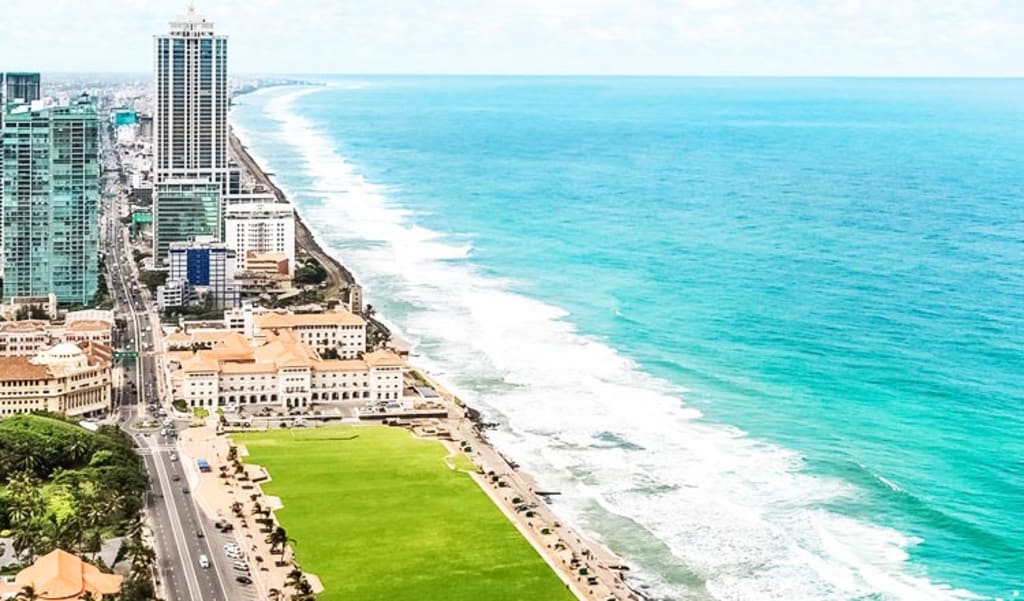Galle Face Green: The Iconic Public Space of Colombo
Galle Face Green is a 12-acre ocean-facing urban park located in the heart of Colombo, Sri Lanka. It is a beloved gathering spot for locals and tourists alike, and it has a rich history that spans over a century. In this blog post, we'll explore the historical details of Galle Face Green and how it became the iconic public space it is today.

Galle Face Green is a 12-acre ocean-facing urban park located in the heart of Colombo, Sri Lanka. It is a beloved gathering spot for locals and tourists alike, and it has a rich history that spans over a century. In this blog post, we'll explore the historical details of Galle Face Green and how it became the iconic public space it is today.
The Early Years
Galle Face Green was originally created in 1859 by the British Governor Sir Henry George Ward as a promenade for the residents of Colombo. At that time, it was a narrow strip of land between the ocean and the Fort area. The park was named after the Dutch word "galle" which means "rock," as the park was located on a rocky shoreline.
The park was initially used for military purposes, including as a firing range for the British garrison stationed in Colombo. However, in the late 1800s, the park was transformed into a public space for leisure and recreation. The British colonial administration added amenities such as a golf course, cricket pitches, and a racecourse.
Expansion and Upgrades
In 1925, the park was expanded to its current size by the British Governor Sir William Manning. The expansion involved reclaiming land from the ocean and building a seawall to protect the park from the sea. The park was also given a new layout, with a promenade that ran along the shoreline and a central lawn for picnics and gatherings.
During this period, Galle Face Green became a popular destination for various events, including kite flying, cricket matches, and political rallies. The park also hosted military parades and was used as a landing strip for seaplanes.
Post-Independence Era
After Sri Lanka gained independence from British colonial rule in 1948, Galle Face Green became a symbol of national pride and identity. The park was often used for national celebrations and events, such as Independence Day parades and cultural festivals.
In the 1980s, the park underwent a major renovation that included the installation of new lighting, benches, and public restrooms. However, the park's historical and cultural significance was not lost in the renovation, and efforts were made to preserve its heritage and character.
Today
Today, Galle Face Green is a bustling hub of activity that offers something for everyone. The park's attractions include stunning ocean views, street food stalls that offer local delicacies, and a variety of cultural and entertainment events.
Galle Face Green is also a popular spot for sports enthusiasts. The park has several cricket pitches and a football field, and it is a great place to go for a jog or a leisurely walk along the seaside promenade.
Fun Facts
- Galle Face Green was initially used as a military firing range by the British garrison stationed in Colombo.
- The park's name is derived from the Dutch word "galle," which means "rock." This is because the park was located on a rocky shoreline.
- During World War II, the park was used as a landing strip for seaplanes.
- In the late 1800s, the park had a golf course, cricket pitches, and a racecourse.
- The park is a popular destination for street food lovers. Some of the most popular dishes include kottu roti, isso wade, and achcharu.
- The Galle Face Hotel, which is located adjacent to the park, was built in 1864 and has hosted many famous guests over the years, including Mahatma Gandhi and Sir Arthur Conan Doyle.
- The park's central lawn is a popular spot for picnics and gatherings. It is also a great place to fly kites.
- Galle Face Green is a symbol of Sri Lanka's colonial past and its struggle for independence.
- The park has several cricket pitches and a football field, and it is a great place to go for a jog or a leisurely walk along the seaside promenade.
- The park is a popular destination for cultural and entertainment events, including music concerts, theatrical productions, and food festivals.
Conclusion
In conclusion, Galle Face Green is more than just a park. It is a symbol of Sri Lanka's history, culture, and identity. From its early years as a military firing range to its current status as a beloved public space, Galle Face Green has evolved and adapted to the changing times while still retaining its unique character and charm. A visit to Galle Face Green is a must for anyone visiting Colombo, as it offers a glimpse into the country's past and present.
About the Creator
Reader insights
Nice work
Very well written. Keep up the good work!
Top insight
Easy to read and follow
Well-structured & engaging content





Comments (5)
nice
good
i like this post
nice
good